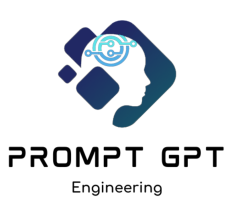Introduction to Prompt Engineering for GPT Models
What is Prompt Engineering in GPT Models?
Prompt engineering is a crucial process in the field of artificial intelligence. It involves designing and refining the initial input given to Generative Pre-trained Transformer (GPT) models. This input, or ‘prompt,’ is carefully constructed to guide the model’s text generation towards the desired outcome. It’s a blend of art and science, requiring both creativity and technical understanding.
Why is Prompt Engineering Important for GPT Models?
This technique is essential for harnessing the full potential of GPT models. With the right prompt, these models can produce more accurate, relevant, and contextually appropriate responses. It turns a general-purpose model into a specialized tool for specific tasks.
Applications of Prompt Engineering in Natural Language Processing

In What Ways Does Prompt Engineering Impact Language Translation?
Prompt engineering significantly improves the ability of GPT models to handle language translation tasks. By providing context and specifying the nature of the translation required, the model can produce more accurate and nuanced translations, capturing the essence of the original text more effectively.
How Does Prompt Engineering Enhance Text Completion and Classification?
Text completion and classification tasks benefit greatly from well-engineered prompts. In text completion, the right prompt leads to more coherent and contextually rich output, making the generated text more readable and relevant. For text classification, a well-crafted prompt ensures that the model categorizes text accurately, an essential factor in managing and interpreting large datasets.
Understanding the Essentials of Effective Prompt Engineering
Key Considerations in Crafting Effective Prompts
Effective prompt engineering revolves around a deep understanding of three key areas:
- The Target Task: Clearly defining what you want the GPT model to achieve.
- Data Familiarity: Knowing the type and nature of data the model will work with.
- Model’s Capabilities: Being aware of what the chosen GPT model excels at and its limitations helps in creating prompts that play to its strengths.
Techniques in Prompt Engineering

Advanced Techniques for Optimizing Prompts
Several techniques stand out in the realm of prompt engineering:
- Prefix Conditioning: This involves using the prompt as a contextual anchor, guiding the model’s response in a certain direction.
- Control Codes: These are special codes used to exert finer control over the nature of the generated content.
- Structured Prompts: By providing structured information within the prompt, the model gets additional guidance, enhancing its output.
- Fine-Tuning: This is a more in-depth approach where the GPT model is specifically trained on a dataset related to the task at hand, making it more adept at that particular task.
Effective prompt engineering is a game-changer in the use of GPT models, leading to more precise and useful outputs across various tasks. By understanding and applying these principles and techniques, one can significantly improve the performance of these advanced AI models.
Impact of Prompt Engineering on GPT Model Performance
How Does Prompt Engineering Improve GPT Model Output?
Effective prompt engineering plays a pivotal role in optimizing the performance of GPT models. It leads to:
- Enhanced accuracy: By providing clearer context, prompts help the model generate more precise responses.
- Improved relevance: Tailored prompts ensure that the model’s output aligns closely with the specific requirements of the task.
- Greater efficiency: Well-crafted prompts can reduce the need for extensive post-generation editing, making the process more efficient.
Examples of Enhanced Performance Through Prompt Engineering
In real-world applications, prompt engineering has led to breakthroughs in fields such as creative writing assistance, automated customer service, and even complex data analysis tasks. By directing the GPT model with specific prompts, users have been able to harness its capabilities more effectively for diverse purposes.
Best Practices and Tips for Effective Prompt Engineering
What Are the Best Practices in Prompt Engineering?
To excel in prompt engineering, consider the following tips:
- Start with a clear goal: Define what you want the GPT model to achieve with each prompt.
- Be concise yet descriptive: Strive for prompts that are succinct but contain enough detail to guide the model.
- Experiment and iterate: Prompt engineering often involves trial and error. Don’t hesitate to refine and test different prompts.
Common Pitfalls to Avoid in Prompt Engineering
While crafting prompts, be wary of:
- Overly vague inputs: These can lead to unpredictable and irrelevant outputs.
- Leading or biased prompts: These can skew the model’s output in unintended ways.
- Ignoring the model’s limitations: Understanding what the GPT model can and cannot do is crucial for effective prompt crafting.
Effective prompt engineering is an evolving art, requiring a blend of creativity, technical understanding, and a keen sense of the desired outcome. By mastering this skill, users can unlock the full potential of GPT models, making them invaluable tools in a wide array of applications. Whether it’s generating creative content, providing customer support, or conducting data analysis, prompt engineering is the key to making the most out of these advanced AI systems.

